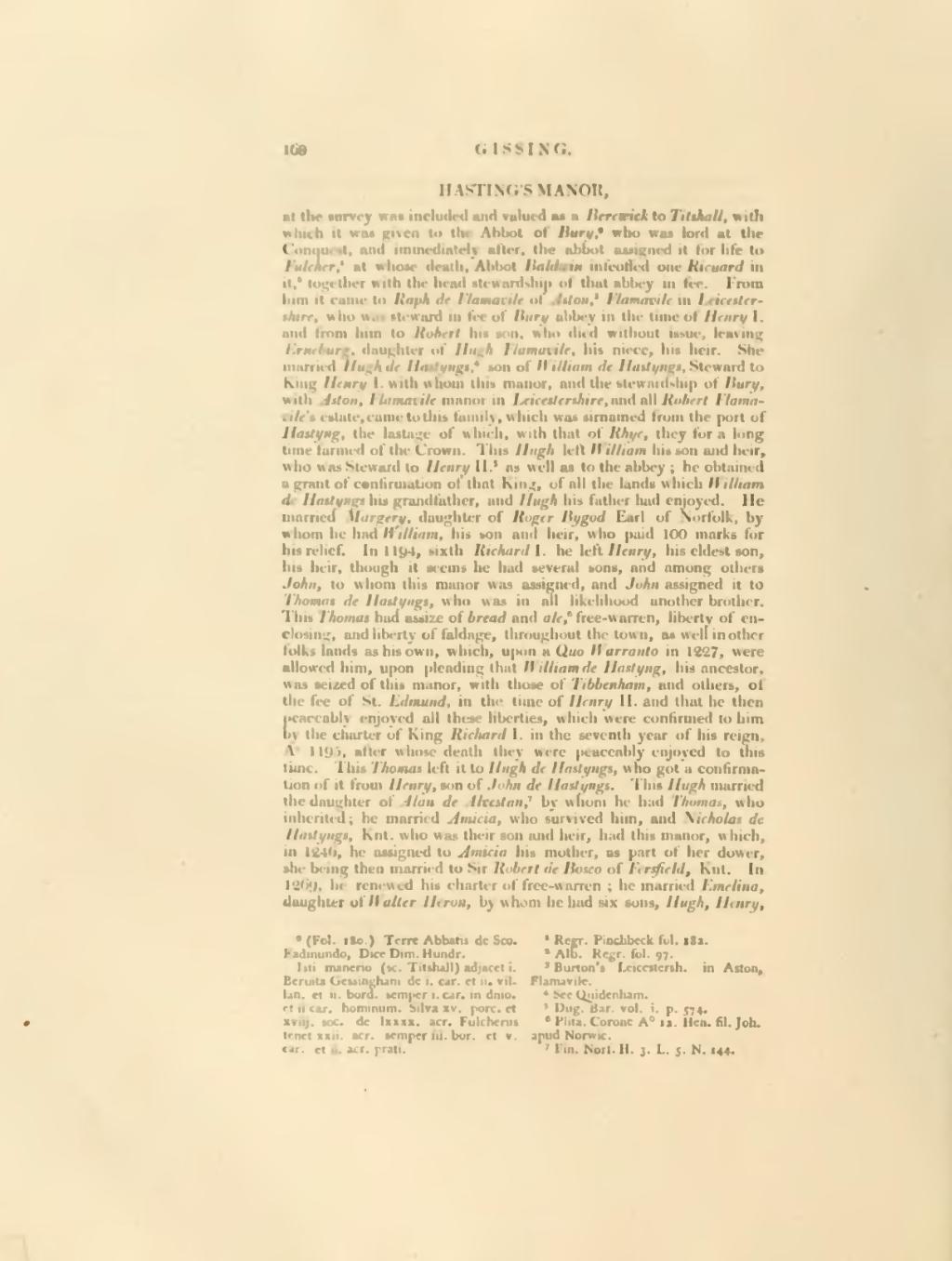given to the Abbot of Bury, who was lord at the Conquest, and immediately after, the abbot assigned it for life to Fulcher, at whose death, Abbot Baldwin infeoffed one Ricuard in it, together with the head stewardship of that abbey in fee. From him it came to Raph de Flamavile of Aston, Flamavile in Leicestershire, who was steward in fee of Bury abbey in the time of Henry I. and from him to Robert his son, who died without issue, leaving Erneburg, daughter of Hugh Flamavile, his niece, his heir. She married Hugh de Hastyngs, son of William de Hastyngs, Steward to King Henry I. with whom this manor, and the stewardship of Bury, with Aston, Flamavile manor in Leicestershire, and all Robert Flamavile's estate, came to this family, which was sirnamed from the port of Hastyng, the lastage of which, with that of Rhye, they for a long time farmed of the Crown. This Hugh left William his son and heir, who was Steward to Henry II. as well as to the abbey; he obtained a grant of confirmation of that King, of all the lands which William de Hastyngs his grandfather, and Hugh his father had enjoyed. He married Margery, daughter of Roger Bygod Earl of Norfolk, by whom he had William, his son and heir, who paid 100 marks for his relief. In 1194, sixth Richard I. he left Henry, his eldest son, his heir, though it seems he had several sons, and among others John, to whom this manor was assigned, and John assigned it to Thomas de Hastyngs, who was in all likelihood another brother. This Thomas had assize of bread and ale, free-warren, liberty of enclosing, and liberty of faldage, throughout the town, as well in other folks lands as his own, which, upon a Quo Warranto in 1227, were allowed him, upon pleading that William de Hastyng, his ancestor, was seized of this manor, with those of Tibbenham, and others, of the fee of St. Edmund, in the time of Henry II. and that he then peaceably enjoyed all these liberties, which were confirmed to him by the charter of King Richard I. in the seventh year of his reign, Ao 1195, after whose death they were peaceably enjoyed to this time. This Thomas left it to Hugh de Hastyngs, who got a confirmation of it from Henry, son of John de Hastyngs. This Hugh married the daughter of Alan de Alvestan, by whom he had Thomas, who inherited; he married Amicia, who survived him, and Nicholas de Hastyngs, Knt. who was their son and heir, had this manor, which, in 1246, he assigned to Amicia his mother, as part of her dower, she being then married to Sir Robert de Bosco of Fersfield, Knt. In 1269, he renewed his charter of free-warren; he married Emelina, daughter of Walter Heron, by whom he had six sons, Hugh, Henry,
